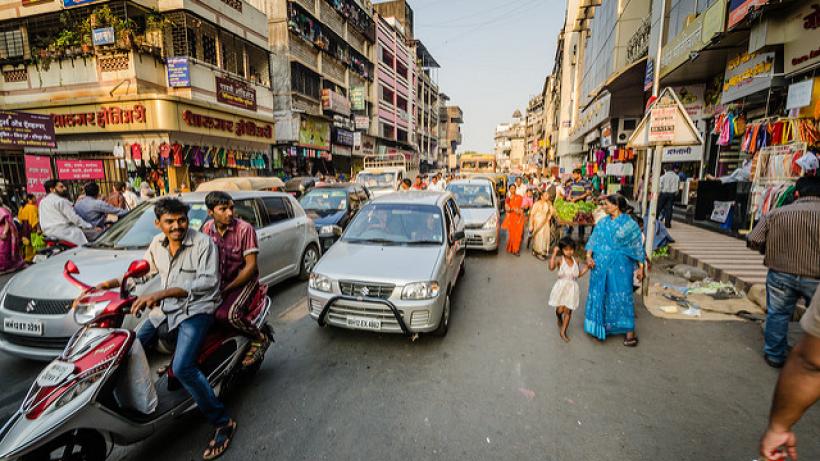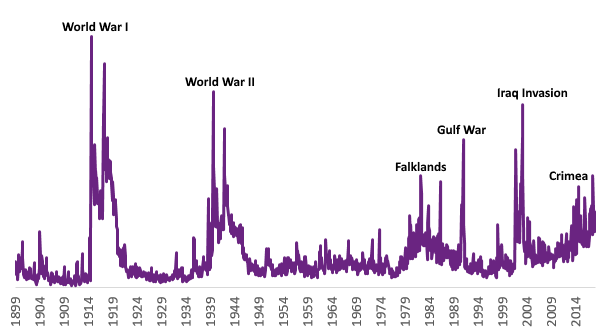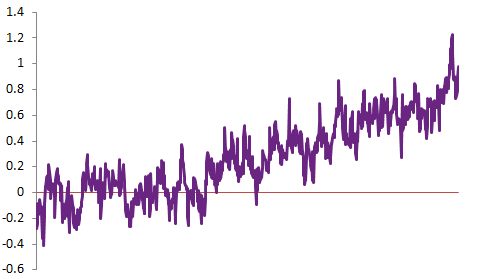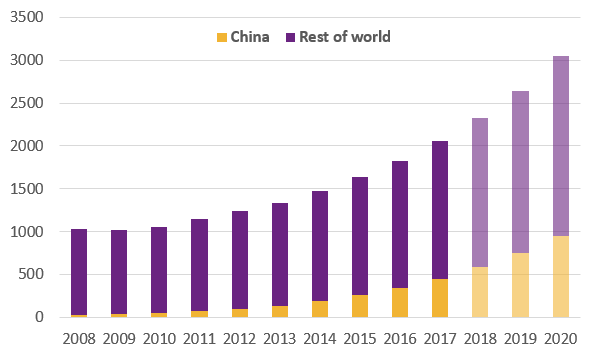
Are we living in unorthodox times?
How different is today’s environment for developing countries compared to a few decades ago? The second blog in this series examines four trends that will shape how countries grow and develop in the future.
The most admired development strategies of the last few decades were deployed at a time of historically unprecedented global integration. Driven by both increasingly open trade policies and technological progress in transportation and communications, trade ran smoothly and widely. Major international conflicts were rare and global financial markets increasingly integrated. The weather was … the weather. This environment favoured development strategies based on, among other things, entering global value chains at low rungs of the ladder and climbing gradually up; diversifying the economy in the direction of comparative advantage; and tending jealously to one’s perceived creditworthiness.
This open and stable environment faces today growing political, technological, and environmental pressures. In this blog we review these pressures in turn.
Trade
 Merchandise trade as percent (%) of GDP Data: World Bank
Merchandise trade as percent (%) of GDP Data: World Bank
The story of global trade is one of booms and busts, ups and downs. Rapid technological change propelled the first wave of globalisation from the 19th century to the early 20th century (Estevadeordal, et al., 2003), before crashing during the interwar period (1919-1939) due to protectionist policies and restrictive exchange rate regimes (Kindleberger, 1986; Kindleberger, 1989; Eichengreen & Irwin, 2010). With the wounds of war healed, the period from 1950 onwards – the second wave of globalisation – saw spectacular growth in trade, driven by a mix of technological change and declining barriers to trade (Hummels, 2007).
Recent events suggest that this latest wave of globalisation has run its course. Trade-restrictive measures have been on the rise while merchandise trade has stalled. A backlash in rich economies, notably the United States, has thrown kindling onto the embers of protectionism. A trade war beckons as the United States ramps up tariffs on imports, with afflicted countries responding in turn. Appetite for large multilateral trade deals, such as the Trans-Pacific Partnership (TPP) or the North American Free Trade Agreement (NAFTA), is weak in the absence of key players. In Europe, populism is adding pressure to slow, or even reverse, integration; Brexit is the case in point. Regardless of whether disaster strikes or is averted, the future outlook remains very unsettled.
Conflict
 Index of geopolitical risk. Caldara & Iacoviello (2018).
Index of geopolitical risk. Caldara & Iacoviello (2018).
The peeling of the international system also raises fundamental risks to stability. Global power is being pulled in all directions, revealing a naked middle – a ‘G-Zero’ world. Reliable allies are finding surprising new friends as insouciance over the health of the international system grows. Local and regional conflicts sputter on as before. Peace cannot be assumed.
Beyond the human tragedy, violence and conflict have deep, lasting effects on economic growth and development (Mueller & Tobias 2016). Conflict scares away capital investment and erodes essential investments into the future economic potential of a country – education, health services, and infrastructure all suffer. The average total effect of a four-year civil conflict is to shrink GDP per capita by a devastating 18% (Mueller 2013).
Geopolitical tensions are on the rise, heightening the likelihood of interstate conflict. The staunchest examples are the barbs being traded between the United States and Iran, North Korea, and China. Even Europe, the historical battleground for humanity’s darkest conflicts, is beginning to fray. Continued Russian pressure in the Baltics threatens NATO at a sensitive time. State-sponsored cyber-aggression is threatening democracy while opening up new fronts for warfare. Mounting scepticism towards trade, immigration, and multilateral engagement risks the collapse of countries onto a unilateral path for foreign policy, weakening the international security architecture. Together with deepening mistrust among the world’s most powerful governments, these ingredients lead to a growing tail risk of major interstate conflict (Eurasia Group, 2017). Fragile disputes could soon spill over into hot conflicts. While the triggers of interstate conflict – nuclear proliferation, territorial disputes in Asia, military scale-up in the Middle East, or brooding mistrust – cannot be predicted, the risks cannot be overlooked.
Climate change
 Monthly land and ocean temperature anomalies (degrees Celsius) with respect to 20th century average, 1950-2017. Data: NOAA
Monthly land and ocean temperature anomalies (degrees Celsius) with respect to 20th century average, 1950-2017. Data: NOAA
Rapid industrialisation has led to the rapid accumulation of greenhouse gases in the atmosphere, warming Earth’s climate. Warmer temperatures feed powerful natural disasters such as cyclones, cause melting and thermal expansion leading to sea-level rise, upset rainfall patterns, and more (IPCC, 2013). When climate change bites, it perpetuates poverty, destroys infrastructure and livelihoods, displaces people, and can even lead to conflict (Hsiang, et al., 2013).
After a three-year slowdown, global emissions grew by 1.4% in 2017. The goal of limiting global warming to within 2 degrees Celsius above pre-industrial averages – a figure reflecting the fluctuations during the stable 10,000-year period, the Holocene, when humans first flourished – will likely evade us. The transition into using cleaner forms of energy is well underway but serious concerns still remain about the speed of mitigation, especially in light of the withdrawal of the United States from the Paris Agreement.
As climate change depends on total emissions, irrespective of source, motivated parties can band together to compensate for any loss in mitigation efforts, although there is no doubt that the withdrawal of the world’s second-largest emitter takes wind out of the sails. We cannot be certain that substantial damage from climate change in developing countries will be avoided.
Automation
 Estimated operational stock of industrial robots (in '000s). Data: International Federation of Robotics
Estimated operational stock of industrial robots (in '000s). Data: International Federation of Robotics
Technological change has driven both growth and disruption. Waves of innovation have paved the way for rapid improvements in living standards over the past two centuries. The world was fed by fertiliser, moved by modern transportation, and connected by the Internet. Soon, swaths of what we do and produce will be taken out of our hands, and replaced by automated processes and machines.
Historically, the beneficiaries often differed from the losers of such change (Hallward-Driemeier & Nayyar, 2017). Despite expanding economic output by improving productivity, technological change shakes up the labour market. Some products or production processes become replaced by new ones, leading to a reallocation of resources across different firms and sectors (WTO, 2017a). In net terms, however, these revolutions have created more new jobs than those which have been displaced (see, for instance, Deloitte (2015) on historical employment impacts of technology in England).
A new revolution looms. Automation is increasing in speed and scale (Figure 3), with the most routine tasks being the first to buckle under its weight. By some estimates, 47% of US workers are at risk of automation over the next two decades (Frey & Osborne, 2013), with this figure rising to 57% of jobs across the OECD (World Bank, 2016). The direct impacts of automation on the demand for labour in developing countries have yet to be truly felt as firms have not yet fully adopted the latest technologies. However, the indirect consequences can be significant: if developed economies keep adopting labour-saving technologies, it may become profitable to produce goods domestically rather than in low-wage countries. With high barriers to adoption for these new technologies, developing countries in turn might find themselves increasingly unable to compete in the global economy. Like the technological revolutions preceding it, automation will offer long-lasting improvements to wellbeing – but not without the inevitable adverse effects that are its by-product.
While the consequences of these trends are far-reaching and inherently unpredictable, they raise notable questions of how developing countries should operate within an integrated global economy. That is the subject of our last three posts in the series.
Editor’s Note: This blog is part of a 5-part series on unorthodox policies for unorthodox times

